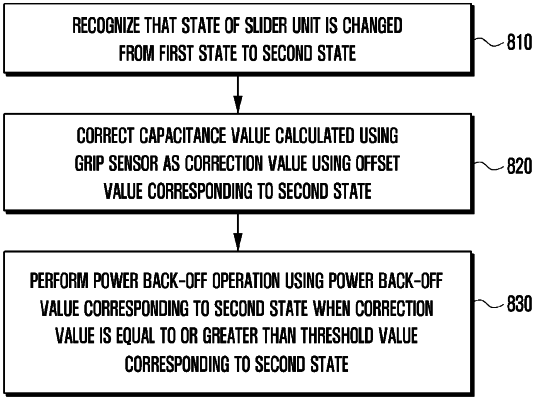| CPC H04W 52/38 (2013.01) [H04W 52/146 (2013.01); H05K 5/0017 (2013.01); H05K 5/0086 (2013.01); H05K 5/0217 (2013.01)] | 6 Claims |

|
1. A portable electronic device comprising:
a housing;
a sliding plate configured to move with respect to the housing between a slide-in state and a slide-out state;
a driving circuit configured to move the sliding plate;
a first antenna;
a wireless communication circuit connected to the first antenna;
a first grip sensor;
a processor connected to the wireless communication circuit, the driving circuit, and the first grip sensor; and
memory connected to the processor,
wherein the memory store one or more programs including instructions which, when executed by the processor, cause the portable electronic device to:
while the sliding plate is in the slide-in state, correct a first capacitance value measured through the first grip sensor using a first offset value corresponding to the slide-in state,
in response to a user input, control the driving circuit so that a state of the sliding plate changes from the slide-in state to the slide-out state different from the slide-in state according to a degree of movement,
based on the sliding plate changing from the slide-in state to the slide-out state, correct the first capacitance value measured through the first grip sensor to be a correction value by using a second offset value corresponding to the slide-out state and different from the first offset value corresponding to the slide-in state, and
in case the correction value is equal to or greater than a threshold value corresponding to the slide-out state, control to lower a power of a radio frequency (RF) signal output from the wireless communication circuit to the first antenna by using a power back-off value corresponding to the slide-out state.
|